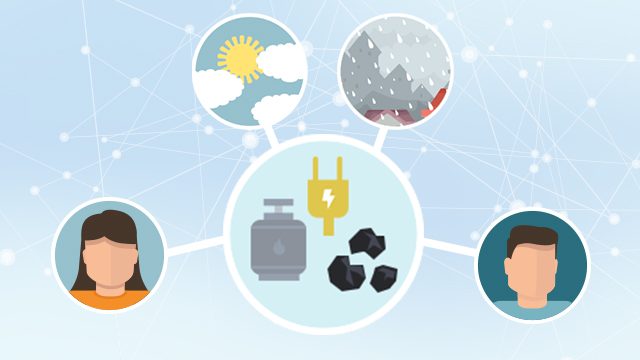SUMMARY
This is AI generated summarization, which may have errors. For context, always refer to the full article.

MANILA, Philippines – Weather and gender affects household energy consumption, according to a study by state think tank Philippine Institute of Development Studies (PIDS) released on Friday, May 26.
In the study “Examining energy use and weather variability through the gender lens,” PIDS found that energy consumption increases as the level of discomfort brought by higher heat index rises.
Data from Household Energy Consumption survey and state weather bureau PAGASA showed that “households turn to the most convenient energy source to power cooling appliances” as the heat index rises.
The same result is drawn from households with higher income level as they are able to afford airconditioning units requiring more energy, according to PIDS.
The study defines heat index as the measure of temperature that the human body feels. The Philippines is characterized by high temperature, high humidity, and abundant rainfall – which can all affect the body temperature.
On the supply side, extreme weather events such as tropical cyclones affect energy prices. On average, the country is visited by around 20 typhoons annually. (READ: Philippine electricity prices to stay high)
The study identified at least 4 energy sources – electricity, LPG, charcoal, and organic sources such as biomass and fuelwood. Electricity is the most popular with 75% of rural and 89% of urban households consuming.
“[Typhoons] disrupts the processes to produce these energy sources. Firewood takes longer time to dry up and charcoal making halts. Heavy rains can cause landslides or damages to roads, which can affect transport of LPG,” PIDS Senior Research Fellow Connie Bayudan-Dacuycuy explained.
In terms of gender, the study also shows that female-majority households consume more electricity and liquified petroleum gas (LPG) than male-majority and gender-balanced households, as activities like heating water and cooking increase consumption.
Alternative sources
Dacuycuy encouraged the government to find cheaper alternative sources to electricity.
“Poverty is a binding constraint to the adoption of cleaner, safer, and more efficient energy sources,” she said.
Households with higher income opt to use more expensive and cleaner energy sources, compared to poorer ones who use coal. (READ: Experts warn: PH to have highest coal share in Asia)
Dacuycuy suggested to make charcoal more accessible for poorer households in rural areas by supporting small enterprises to ensure steady supply.
But with the negative effects of charcoal on health, she noted that LPG is considered a better alternative. (READ: Renewable energy is healthy energy)
“[The government should] explore policies that can address constraints on supply and demand-side of LPG use,” she said.– Rappler.com
Add a comment
How does this make you feel?
There are no comments yet. Add your comment to start the conversation.